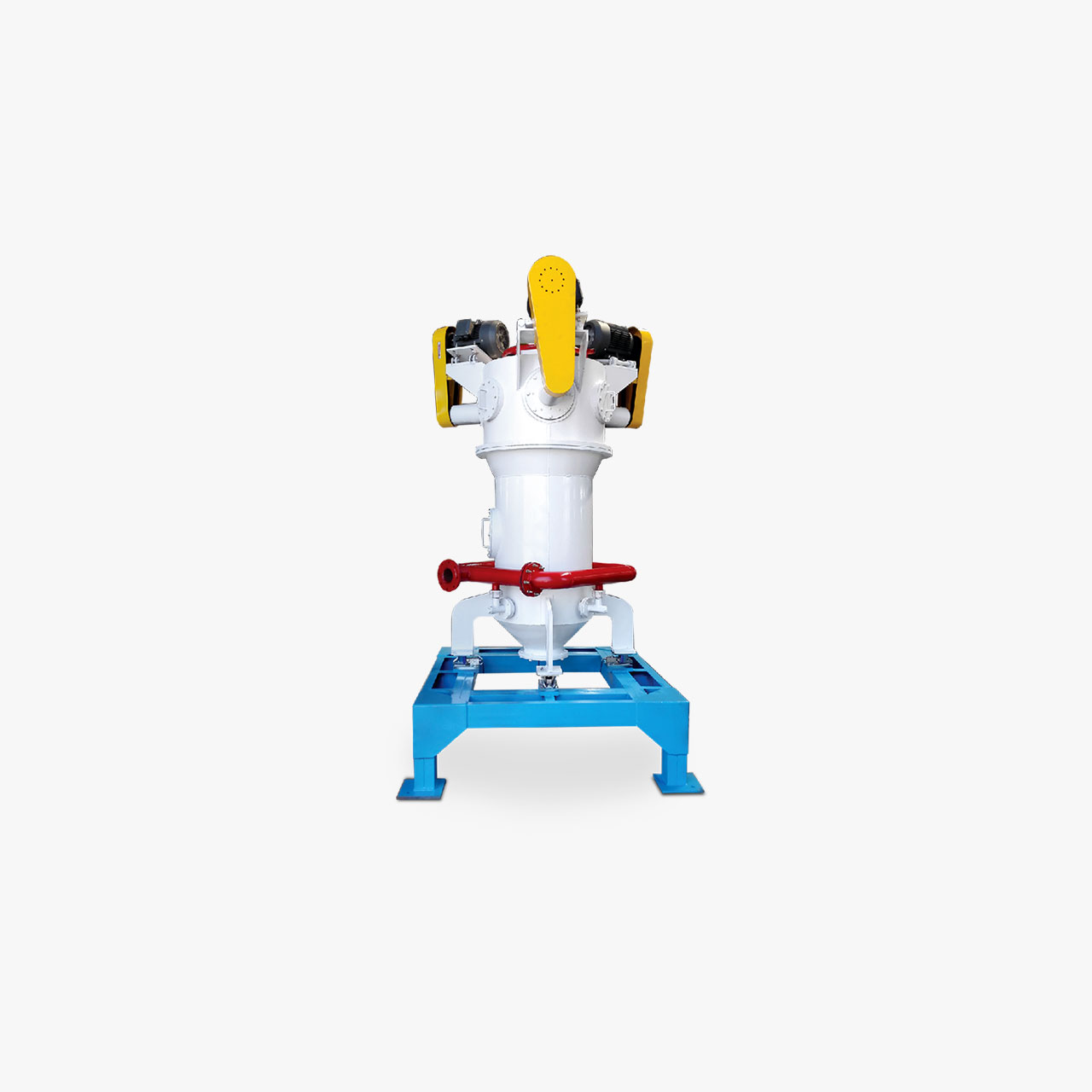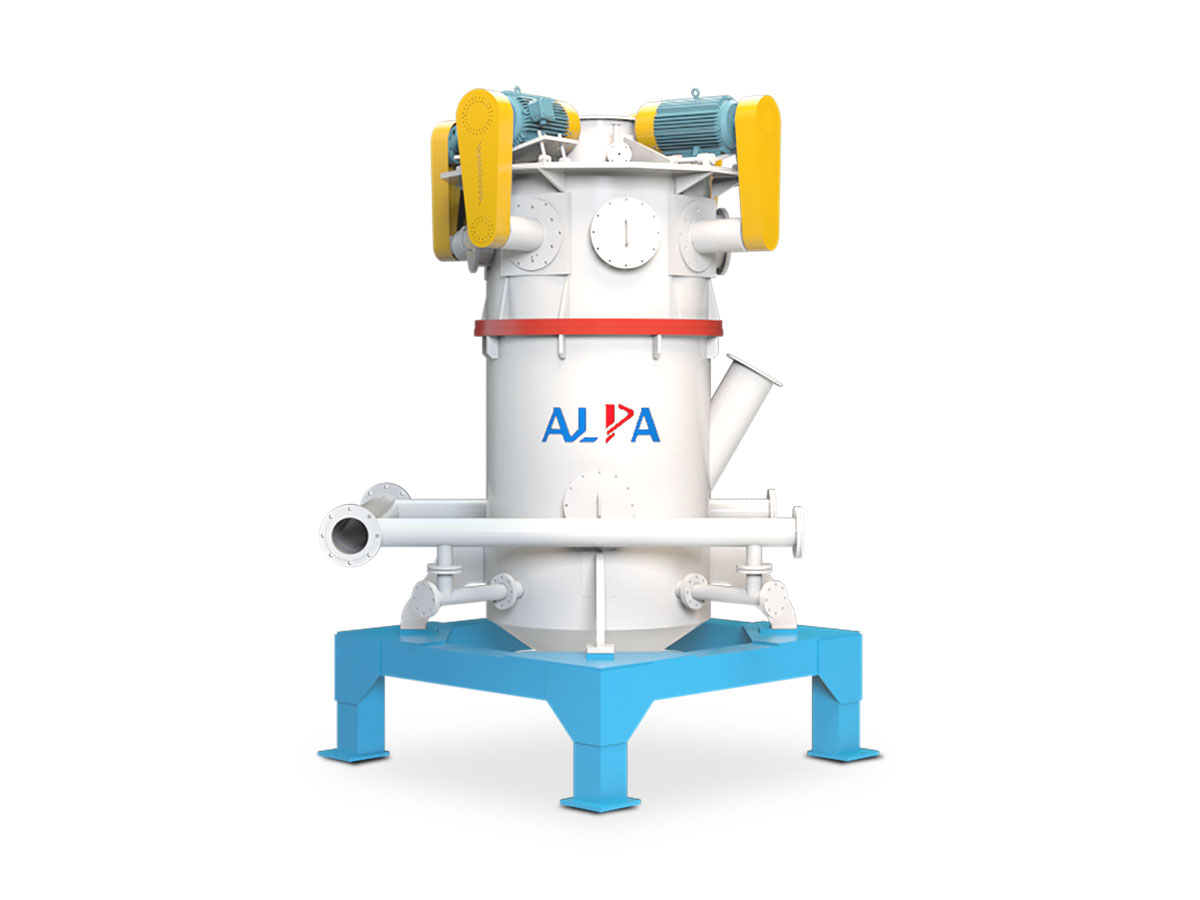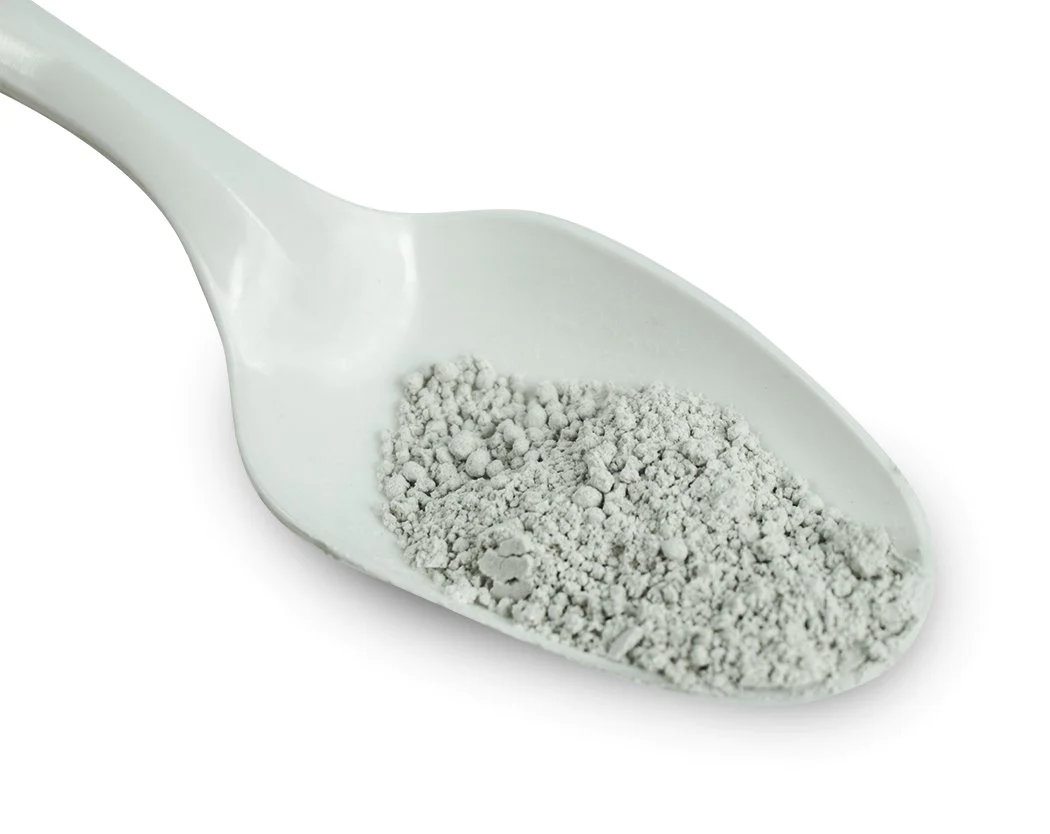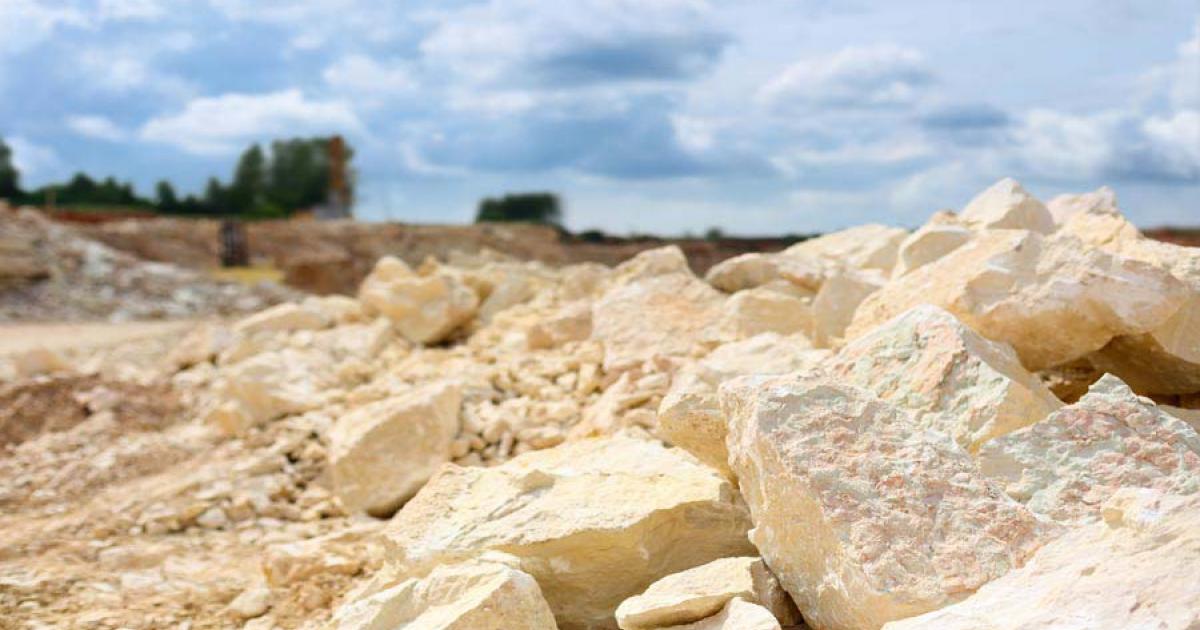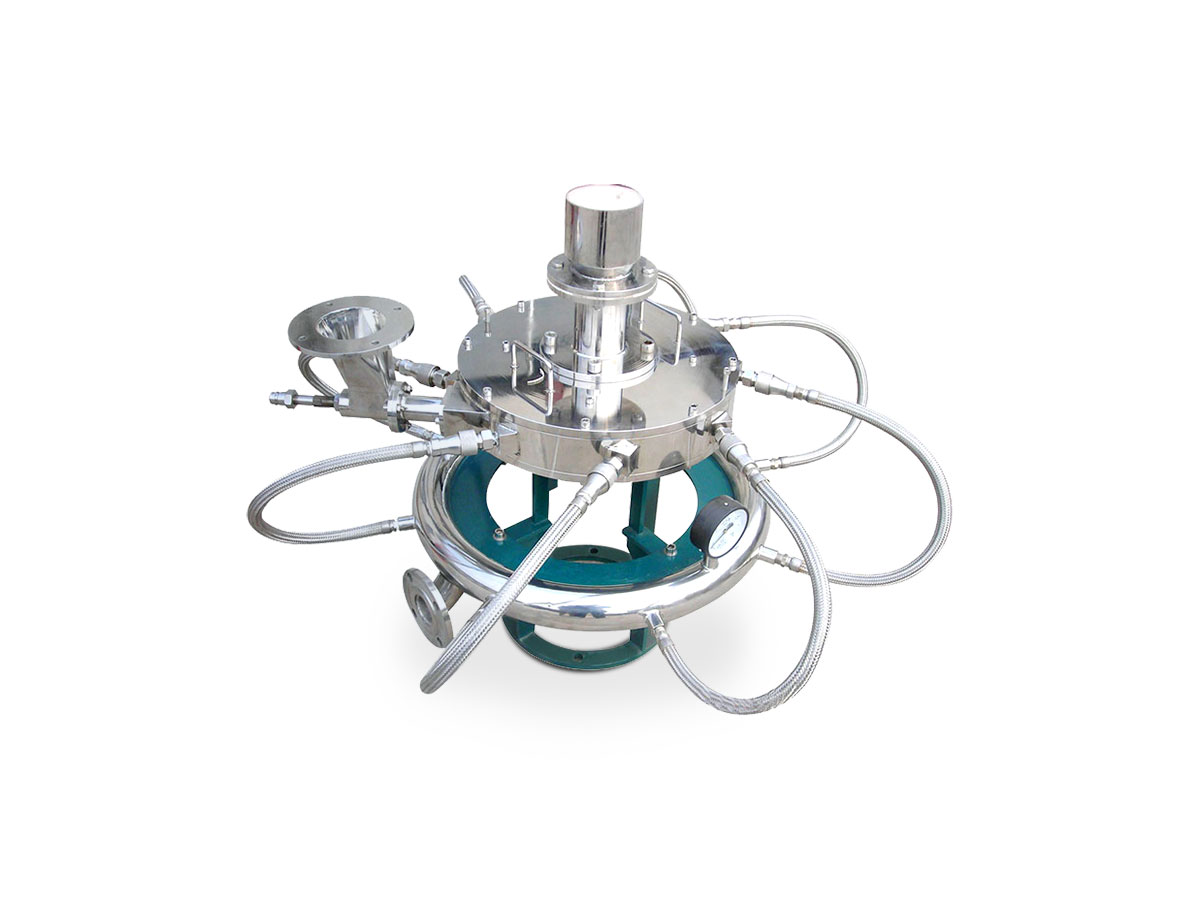Fine grinding of high value-added powders
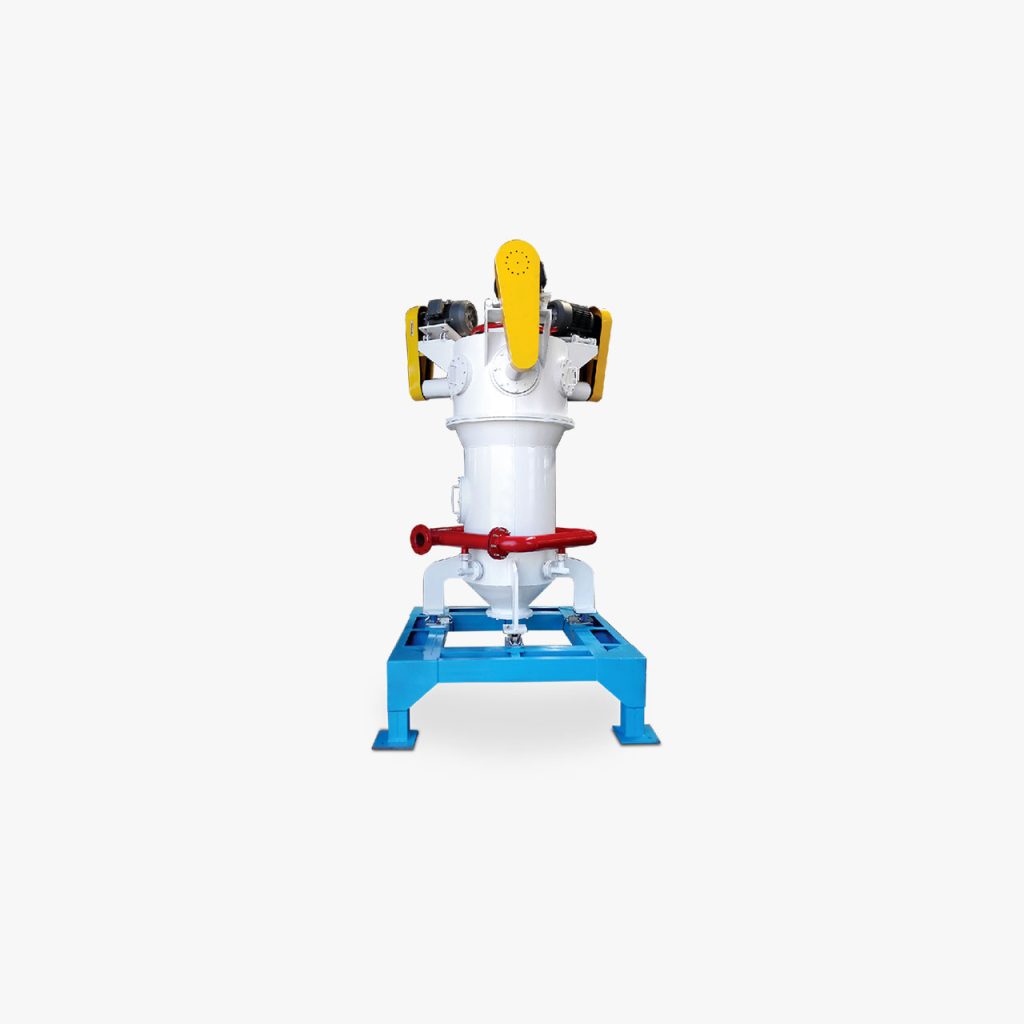
In today's high-tech environment, almost all products are facing higher standards and requirements. Most products are in some form of powder, such as powder and liquid (paste or slurry), powder and gas (aerosol), powder and powder (mixed powder or filled polymer). As a result, powder handling technology has become a key must-have for many materials producers.
Methods for producing fine particles can be achieved through chemical reactions, phase changes, or mechanical forces such as grinding.
Advanced ceramic raw materials, electronic ceramic raw materials, photovoltaic cell materials, quartz minerals and other medium and high hardness mineral materials have high hardness, high anti-pollution requirements, high powder fineness, and concentrated particle size distribution, which is a major problem in the grinding and classification process.
Dry and wet methods are the two most common and effective methods of comminution. Traditionally, airflow mills are generally used for dry grinding and classification, or wet sand mills are used for grinding and then dehydration, drying and depolymerization. The former process consumes high energy, while the latter process is complex.
At present, ultrafine pulverization equipment can be divided into two categories: mechanical type and air flow type according to its working principle. The mechanical type is divided into ball mill, impact micro pulverizer, colloid mill and ultrasonic pulverizer. Compared with ordinary mechanical superfine pulverization, jet pulverization can pulverize materials very finely, and the particle size is more uniform. Because the gas expands at the nozzle to cool down, the pulverization process does not generate heat, so the pulverization temperature rise is very low. This feature is especially important for ultrafine pulverization of low melting point and heat sensitive materials. Its disadvantage is that it consumes a lot of energy, which is generally considered to be several times higher than other crushing methods.
Ultrafine pulverization technology is widely used in the food industry. For example, by-products after processing agricultural products (such as wheat bran, oatmeal peels, apple peels, etc.) are rich in vitamins and trace elements. Because the fineness of conventionally crushed fibers affects the taste of the food, it is difficult for consumers to accept them. The use of ultra-fine grinding technology can significantly improve the taste and absorbability of fiber foods through micronization of fiber, thereby making full use of food resources and increasing the nutrition of food. After the vegetables are ultrafinely pulverized at low temperature, all nutrients are preserved, and the cellulose is micronized and increased in water solubility, resulting in a better taste. After the tea leaves are pulverized, it is more beneficial to the protein, carbohydrates, carotene and part of the tea leaves. Mineral absorption.
Ultra-fine grinding equipment - "Jet Mill"
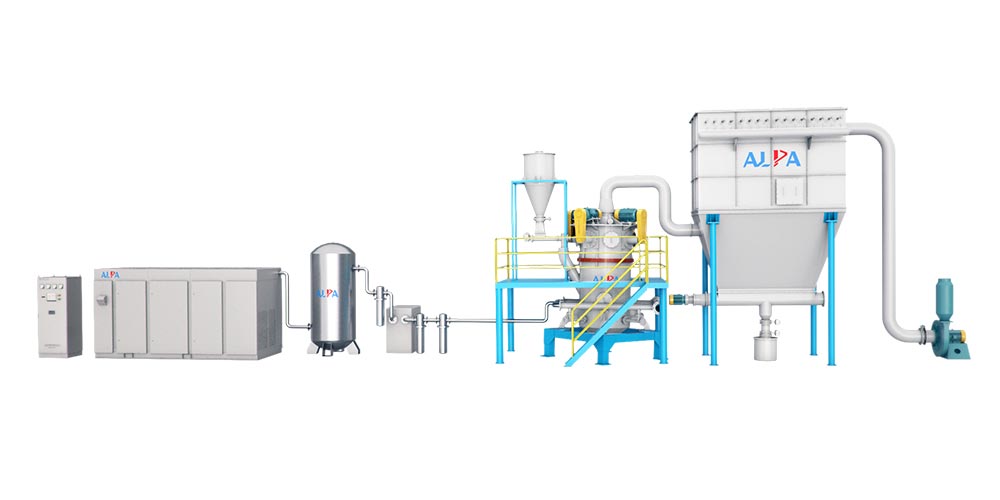
Jet milling technology is a superfine pulverization technology that has developed rapidly in recent years. Because of its advantages such as high crushing strength, fine particle size, narrow distribution, low product pollution, and the use of inert gas, it is widely used in medicine, chemical raw materials and It has been widely used in the preparation of special powders.
The jet mill is to accelerate the compressed air or inert gas through the nozzle, and use the energy of high-speed elastic fluid (300~500m/s) or superheated steam (300~400℃) to make particles, gas and particles, There are strong impacts, shearing, collisions, frictions, etc. between the particles and the wall and other components. At the same time, under the action of the centrifugal force of the airflow rotation or combined with the classifier, the coarse and fine particles are classified to achieve ultra-fine crushing. equipment. As a common preparation method for pharmaceutical powders, jet mill is suitable for crushing antibiotics, enzymes, low-melting point and other heat-sensitive drugs.
The types of jet pulverizers used for pharmaceutical powder preparation mainly include: disc jet pulverizer, circulating tube jet pulverizer, target jet pulverizer, ring jet pulverizer, collision jet pulverizer, fluidized jet pulverizer Bed collision air pulverizer.
Because the jet mill uses gas as kinetic energy to achieve crushing, its crushing mechanism is different from other mechanical equipment. Specifically in:
01 Narrow particle size distribution range, fine average particle size
During the pulverization process, due to the centrifugal force of the high-precision classifier airflow, the coarse and fine particles are automatically classified, so the obtained product has a narrow particle size distribution range and a fine average particle size. The D50 is generally between 5 and 10 μm.
02 Good powder shape, high product purity
The powder produced by the jet mill tends to be "spherical", the particle surface is smooth, the shape is regular, the dispersibility is good, and the mechanical wear is small during the pulverization process, and the obtained product is of high purity.
03 Suitable for low melting point, heat sensitive drugs
The jet mill is driven by compressed air. The high-speed jet airflow produces the Joule-Thomson effect. The airflow collides adiabatically at the nozzle, thereby reducing the temperature of the pulverization system and offsetting the heat generated by drug collision and friction. The ambient temperature in the pulverization chamber can reach It is tens of degrees Celsius below zero, so it is suitable for preparing low melting point and heat-sensitive drugs.
04 Good airtightness, no pollution
Due to the good airtightness of the jet mill, the product yield is high; the whole crushing process is carried out under negative pressure, and the crushing will not leak, so it has no pollution to the environment and can be operated in a sterile state.
05 Easy to operate
The crushing process is continuous, using closed circulation system technology and automatic control technology, and is easy to operate.
06 Crushing-mixing-drying online operation
Jet pulverizer can realize pulverization, mixing and drying on-line operation, and can also simultaneously modify drug powder, for example, some drugs are sprayed into liquid while pulverizing, for particle coating and surface modification.
In the pharmaceutical process, ultrafine powder drugs are generally obtained through micron powder crystallization and ultrafine crushing. In view of the characteristics of ultrafine drugs such as miniaturized particle size and high quality purification, the main machines suitable for ultrafine crushing of drugs include: mechanical impact crusher, ball mill, vibration mill, stirring mill, bidirectional rotating ball mill, airflow pulverizer, etc.
10 major changes after ultrafine grinding of powder materials!
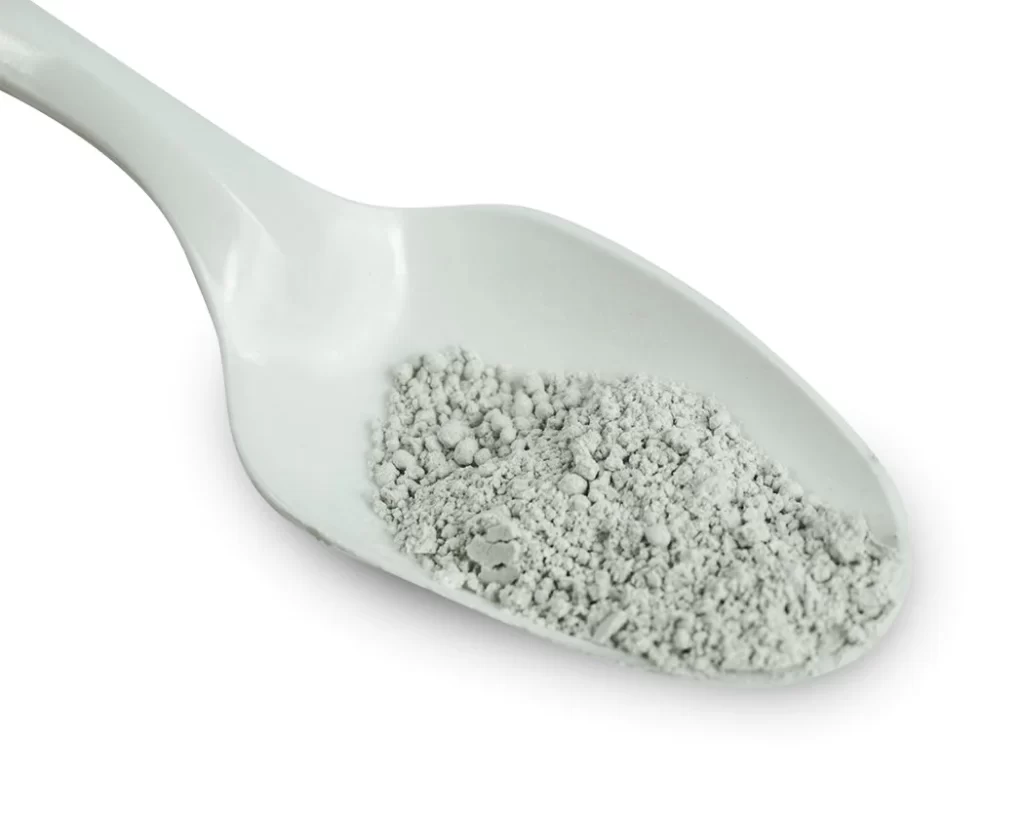
The various changes that occur to the crushed materials during the crushing process are insignificant compared to the coarse crushing process, but for the ultra-fine crushing process, due to reasons such as high crushing intensity, long crushing time, and large changes in material properties, it is seems important. This change in the crystal structure and physical and chemical properties of the crushed material caused by mechanical ultrafine crushing is called the mechanochemical effect of the crushing process.
1. Changes in particle size
After ultrafine grinding, the most obvious change in the powder material is the finer particle size. According to different particle sizes, ultrafine powders are usually divided into: micron level (particle size 1 ~ 30 μm), submicron level (particle size 1 ~ 0.1 μm) and nano level (particle size 0.001 ~ 0.1 μm).
2. Changes in crystal structure
During the ultrafine crushing process, due to the strong and lasting mechanical force, the powder material undergoes lattice distortion to varying degrees, the grain size becomes smaller, the structure becomes disordered, amorphous or amorphous substances are formed on the surface, and even Polycrystalline conversion. These changes can be detected by X-ray diffraction, infrared spectroscopy, nuclear magnetic resonance, electron paramagnetic resonance, and differential calorimetry.
3. Changes in chemical composition
Due to the strong mechanical activation, the materials directly undergo chemical reactions under certain circumstances during the ultrafine crushing process. Reaction types include decomposition, gas-solid, liquid-solid, solid-solid reaction, etc.
4. Changes in solubility
Dissolution of powdered quartz, calcite, cassiterite, corundum, bauxite, chromite, magnetite, galena, titanomagnetite, volcanic ash, kaolin, etc. in inorganic acid after fine grinding or ultrafine grinding Both speed and solubility are increased.
5. Changes in sintering properties
6. Changes in cation exchange capacity
Some silicate minerals, especially some clay minerals such as bentonite and kaolin, have obvious changes in cation exchange capacity after fine grinding or ultrafine grinding.
7. Changes in hydration performance and reactivity
Fine grinding can improve the reactivity of calcium hydroxide materials, which is very important in the preparation of building materials. Because these materials are inert or not active enough for hydration.
8. Electrical changes
Fine grinding or ultra-fine grinding also affects the surface electrical and dielectric properties of minerals. For example, after biotite is impacted, crushed and ground, its isoelectric point and surface electrokinetic potential (Zeta potential) will change.
9. Changes in density
After grinding natural zeolite (mainly composed of clinoptilolite, mordenite and quartz) and synthetic zeolite (mainly mordenite) in a planetary ball mill, it was found that the density of these two zeolites changed differently.
10. Changes in properties of clay suspensions and hydrogels
Wet grinding improves the plasticity and dry flexural strength of clay.
In short, in addition to the properties of raw materials, feed particle size and crushing or activation time, factors that affect the mechanochemical changes of materials also include equipment type, crushing method, crushing environment or atmosphere, crushing aids, etc.
Application of superfine powder technology to develop edible resources
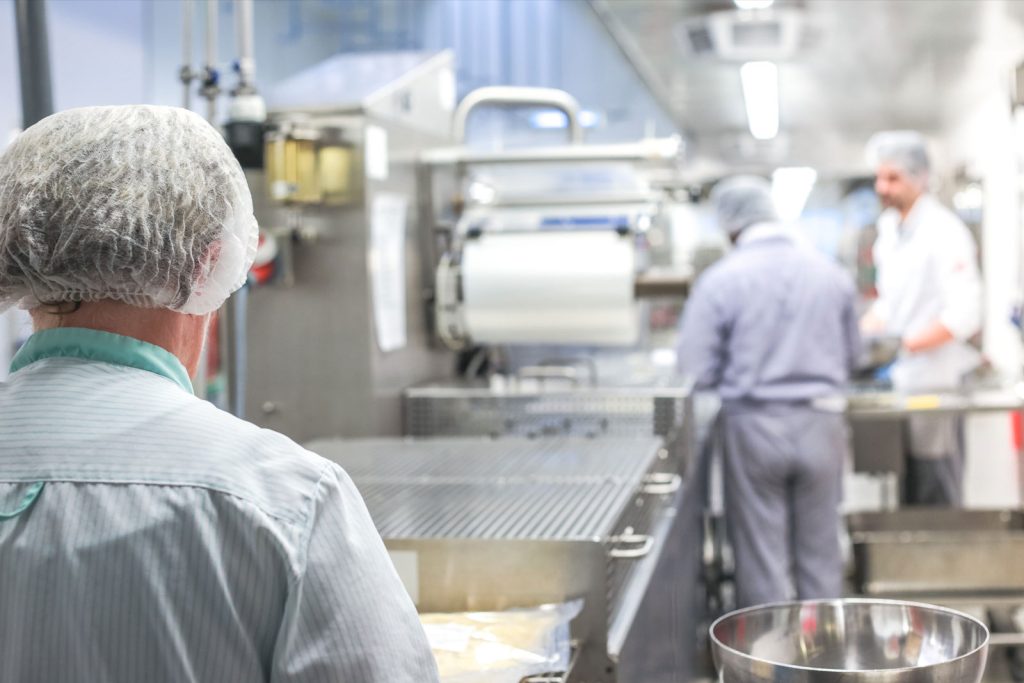
With the development of modern technology, the process puts forward higher and higher requirements on the particle size of powder, and many materials need to be crushed to submicron or nanometer level, which cannot be realized by traditional crushing technology and equipment. Ultrafine powder technology is developed based on this and involves the preparation and application of ultrafine powder and a new technology related to it. Its research content includes ultrafine powder preparation technology, classification technology, separation technology, drying technology , Transportation mixing and homogenization technology, surface modification technology, particle composite technology, detection and application technology, etc. Due to fine particle size, narrow distribution, uniform quality and few defects, ultrafine powder has large specific surface area, high surface activity, fast chemical reaction speed, high solubility, low sintering temperature, high sintered body strength, and good filling and reinforcing performance. And other characteristics and unique electrical, magnetic, optical properties, etc., are widely used in high-performance ceramics, ceramic glazes, microelectronics and information materials, plastics, rubber and composite fillers, lubricants and high-temperature lubricating materials, fine abrasives and grinding High-tech and new material industries such as polishing agents, paper-making fillers and coatings, advanced refractory materials and thermal insulation materials.
Application of superfine powder technology to develop edible resources
1 Grain processing
The glucosidic bond of flour may be broken during the superfine process, and it is easy to be hydrolyzed by α-amylase, which is beneficial to fermentation. As the flour particles become smaller, the surface area becomes larger, which improves the adsorption, chemical activity, solubility and dispersibility of the material, which changes the physical and chemical properties of the macroscopic flour. Wu Xuehui proposed that flour with different particle sizes can be used to obtain flour with different protein content to meet the needs of different products. The flour processed by ultra-fine powder has significantly improved taste and human absorption and utilization. Add wheat bran powder, soybean micropowder, etc. to flour to transform low-quality flour into high-fiber or high-protein flour.
2. Deep processing of agricultural and sideline products
In recent years, plant-based green food has become the focus of attention of countries all over the world, and edible plant-based food is an important resource for human survival. This situation can be improved if ultra-fine powder technology is used. For example, the first step in the deep processing of edible plant stems and fruits is to achieve the purpose of cell wall breaking and component separation to varying degrees by controlling the crushing fineness.
3. Functional health food
Ultrafine powder technology can be widely used in various fields of health food industry. Generally speaking, the use of ultra-fine crushing high-tech means to crush health food raw materials into ultra-fine products with a particle size of less than 10 μm is called ultra-fine health food. It has a large specific surface area and porosity, so it has strong adsorption and high activity.
4. Aquatic product processing
Spirulina, kelp, pearls, turtles, shark cartilage and other ultrafine powders processed through ultrafine grinding have some unique advantages. The traditional method of processing pearl powder is ball milling for more than ten hours, and the particle size reaches several hundred meshes. However, if pearls are crushed instantaneously at a low temperature of about -67°C and under strict purification airflow conditions, ultrafine pearl powder with an average particle size of 1.0 μm and D97 below 1.73 μm can be obtained. In addition, the entire production process is pollution-free. Compared with traditional pearl powder processing methods, the active ingredients of pearls are fully preserved, and its calcium content is as high as 42%. It can be used as a medicinal diet or food additive to make calcium-supplementing nutritious food.
In summary, the application of ultrafine powder technology in food processing has the following important significance: (1) it can expand the utilization range of edible resources and improve the quality of food; (2) it can improve the biological activity of materials; (4) It can ensure the integrity of the raw material composition; (5) Simplify the production process of the product and reduce the production cost.
Ultrafine powder technology has a wide range of uses in the food industry, and plays a very important role in developing new edible resources and improving product quality.
Application of Superfine Pulverization Technology in Food Processing

Superfine Grinding (SG) technology, as a new technology that has developed rapidly in the past 20 years, is a deep processing technology that combines mechanical mechanics and fluid mechanics to overcome the internal cohesion of objects and crush materials into micron or even nanometer powders. Ultrafine pulverization treatment can make the material particle size reach 10 μm or even nanometer level. Since the powder structure and specific surface area are greatly changed compared with ordinary particles, the ultrafine pulverization particles have special properties that ordinary particles do not have, and with the modern equipment With the development of science, superfine pulverization technology has made major breakthroughs in many fields such as food and pharmaceuticals, especially in the extraction of Chinese herbal medicines, the development of functional foods, and the utilization of waste resources.
According to the particle size of processed finished powder, ultrafine pulverization technology can be mainly divided into: micron pulverization (1 μm ~ 100 μm), submicron pulverization (0.1 μm ~ 1.0 μm) and nano pulverization (1 nm ~ 100 μm). The preparation of micron powder generally adopts physical pulverization method; the preparation of submicron and below particle size powder adopts chemical synthesis method. The chemical synthesis method has the disadvantages of low output and high operation requirements, which makes the physical pulverization method more popular in the modern processing industry.
According to the state of crushed materials, ultrafine grinding is mainly divided into two methods: dry method and wet method. Dry pulverization includes rotary ball mill pulverization, airflow pulverization, high-frequency vibration pulverization, etc.; wet pulverization includes colloid mill, homogenizer and stirring mill.
Application of Superfine Pulverization Technology in Modern Food Processing
1. Extraction of natural active ingredients of precious Chinese herbal medicine
Researchers generally use methods such as microscopic identification and physical property testing to perform characterization and physical property testing of ordinary Chinese herbal medicine powder and ultrafine powder. It was found that the ultrafine pulverization technology can effectively destroy the cell walls of a large number of cells in medicinal materials, increasing cell fragments, and its water solubility, swelling power, and bulk density are also improved to varying degrees compared with ordinary powder. At the same time, the dissolution rate of active ingredients in the ultrafine pulverization process is improved.
2. Reuse of food and drug processing waste resources
Food and drug processing waste usually still contains certain natural active ingredients, and discarding them will not only cause a lot of waste but also pollute the environment. The emergence of ultrafine pulverization technology provides more possibilities for the reuse of food and drug processing waste resources.
3. Development and utilization of functional food processing
Because the cell structure of some raw materials rich in natural active ingredients is tough and not easy to be destroyed, the release rate of the nutrients and functional ingredients contained in them is usually at a low level, which cannot be fully developed and used. Ultrafine pulverization technology brings the possibility to destroy the cell structure and improve its nutrient release efficiency.
4. Other aspects
Research on ultrafine pulverization technology also focuses on the flavor components of spices, usually using low-temperature ultrafine pulverization technology. The research results show that the appropriate particle size will enhance the aroma of raw materials, and the aroma will not be lost in the later storage process; too small particle size will cause the aroma to lose faster with the prolongation of storage time.
New energy battery material preparation technology-Grinding/Drying/Spheroidizing
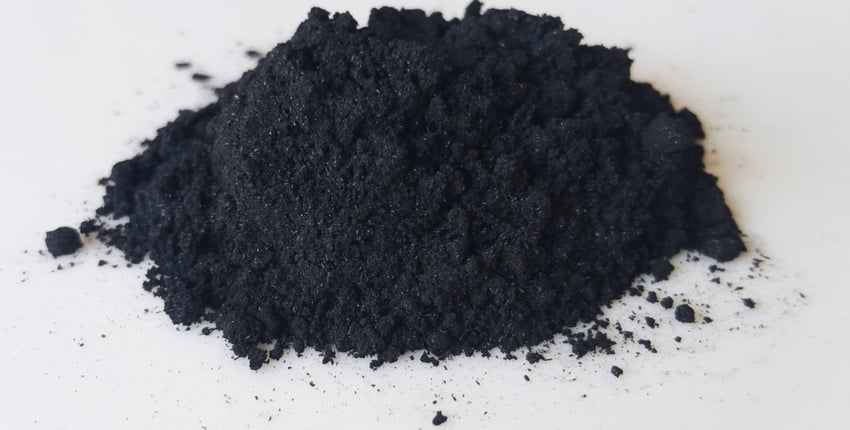
In new energy batteries, many materials are typical powder substances, including lithium iron phosphate (LiFePO4), lithium cobaltate (LiCoO2), lithium nickelate (LiNiO2), lithium manganate (LiMn2O4) in lithium-ion batteries; Sodium titanate (NaTi2(PO4)3), sodium sulfur (Na2S), sodium oxide (Na2O), Prussian blue materials in ion batteries; sulfur powder, graphite (used as sulfur carrier) in lithium-sulfur batteries; solid-state batteries Solid electrolytes, positive and negative active materials, etc.
In the process of these battery materials, the grinding/drying/spheroidizing process is essential, the main reasons are:
① "Grinding" can make the particles of powder materials smaller and increase the surface area, thereby increasing the reaction interface of the battery, increasing the contact area between the material and the electrolyte, and accelerating the transmission speed of ions and electrons;
② "Drying" can remove the moisture or organic solvent introduced by the reaction involving liquid phase and solid phase in the battery manufacturing process, so as to ensure the stability and performance of the material.
③ Graphite "spheroidization" can improve the structure and performance of graphite particles, so that they have better electrical conductivity and mechanical strength.
Through the above measures, the performance of the battery can be significantly improved, including improving the uniformity and consistency of the battery material, ensuring that the battery material is evenly distributed, and improving the battery energy density, charging rate and cycle life. In addition, the problem of battery failure caused by uneven local reaction of the battery can also be avoided.
Although pulverization, drying and spheroidization are already quite mature processes, there are still various existing problems and new requirements to keep pace with in the battery material manufacturing process. For example, in terms of particle size control, it is necessary to ensure as much as possible during the pulverization process. The particle size of the powder is uniform - too large particles may lead to incomplete reaction, too small particles may increase the surface energy, causing problems of powder accumulation and agglomeration. Therefore, precise control of crushed particle size is actually a long-standing challenge.
In short, in order to improve the overall performance of the battery and solve the difficulties and difficulties in the process of crushing, drying, spheroidization, etc., researchers and engineers continue to carry out technological innovation and improvement.
Limestone Product Features and Market
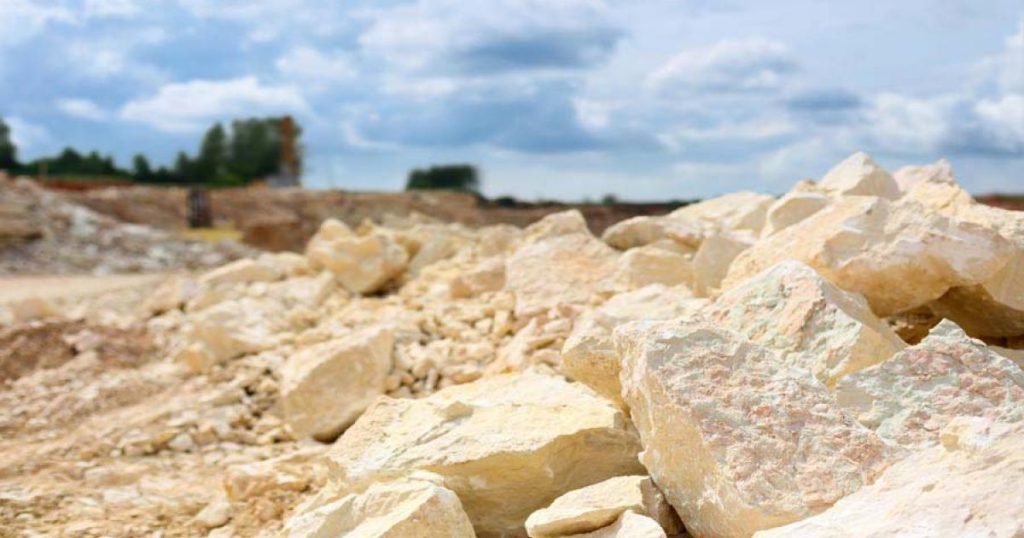
Lime is an air-hardening inorganic gelling material with calcium oxide as the main component. It is made of minerals with high calcium carbonate content such as limestone, dolomite, chalk, and shells, and is calcined at 900-1100 °C.
1. Lime product features
Since the production raw materials often contain magnesium carbonate (MgCO3), the quicklime also contains the secondary component magnesium oxide (MgO). According to the content of magnesium oxide, quicklime is divided into calcareous lime (MgO≤5%) and magnesia lime (MgO >5%).
Quicklime is white or gray lumpy. For ease of use, lumpy quicklime often needs to be processed into quicklime powder, slaked lime powder or lime paste. Quicklime powder is a fine powder obtained by grinding massive quicklime, and its main component is CaO; slaked lime powder is a powder obtained by slaking lumpy quicklime with an appropriate amount of water, also known as slaked lime, and its main component is Ca(OH)2; Lime paste is a paste obtained by slaking block quicklime with more water (about 3 to 4 times the volume of quicklime). It is also called lime slurry, and its main component is also Ca(OH)2.
2. Lime product market overview
At present, the vast majority of lime is still used in metallurgy, chemical industry and building materials industry. For example, slaked lime is formulated into lime slurry, lime plaster, lime mortar, etc., which are used as coating materials and brick adhesives.
Lime is an indispensable auxiliary raw material in the steel production process. In addition, the use of lime in other fields is still in the development and growth stage, such as sewage treatment, dust removal, dry desulfurization, semi-dry desulfurization, and denitrification in the environmental protection industry. As a soil improver in agriculture, as a desiccant in the food industry, etc., with the development of the industry in the direction of refinement, diversification and specialization, the application fields of lime products will be wider, which will help stimulate industry demand. Especially with the enhancement of people's awareness of environmental protection, the application market prospect of lime in the environmental protection industry is broad.
Processing technology of grinding and classifying
After the ultra-fine grinding and grading of non-metallic mineral deep processing products can greatly create profits, but also improve the quality of related products; With the continuous exploitation of mineral resources, the grade of minable stone is constantly declining, and the quality of most minerals can not meet the requirements of use. It needs to be processed by crushing and other processing technologies before meeting the standard of use. So the pulverization process is more and more important in the industrial process of quartz processing.
Application of Jet Milling Technology in API
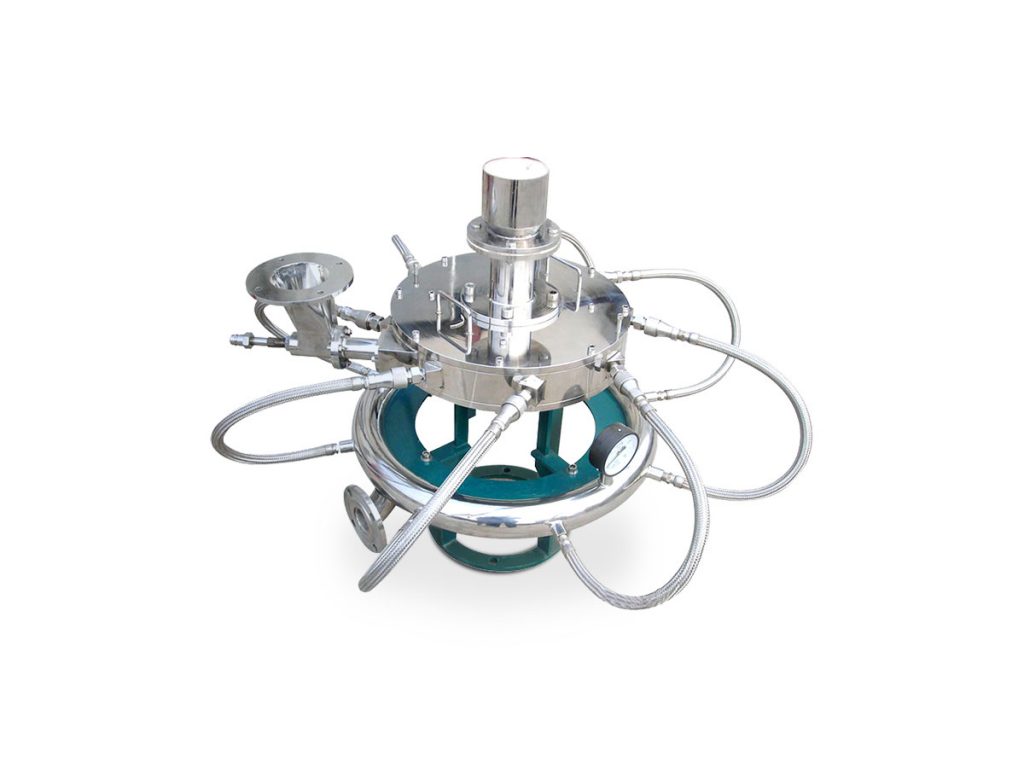
The application of jet milling technology in API can significantly improve the appearance and properties of solid preparations, as well as various pharmaceutical parameters such as solubility, dissolution rate, absorption rate, adhesion, and bioavailability.
Jet milling technology and its characteristics
1. The crushing temperature is low, and the Joule-Thomson effect of the high-speed jet flow, when the gas jet expands, it will absorb heat by itself, thus offsetting the heat generated by the collision and friction of the material.
2. Crushed in a confined space, no leakage of material dust.
3. The moisture of API often affects the crushing effect. Generally, the less moisture, the easier it is to crush, and the moisture content is required to be less than 4%.
4. Jet grinding parameters: grinding chamber diameter (mm), grinding pressure (Mpa), air consumption (m3/min), feeding amount (g/min), processing capacity (kg/h), feeding particle size, etc.
5. Grading particle size control parameters: the rotational speed of the centrifugal air classifying wheel and the secondary air volume.
The structure of the fluidized bed jet mill
(1) The material is sent into the crushing chamber through the feeder;
(2) The compressed air passes through the nozzle to generate a supersonic jet flow to form a centripetal reverse jet flow field in the crushing chamber, which is mixed and fluidized with the material at the bottom of the crushing chamber, and the accelerated materials meet at the intersection point of the nozzle, resulting in violent impact and shear cut, rub and crush;
(3) The material moves with the airflow to the flow field generated by the high-speed turbine (frequency conversion adjustable) on the upper part of the crushing chamber, and the fine powder moves with the airflow to the upper turbine classifier; the coarse particles are thrown to the cylinder under the action of centrifugal force Near the wall, and fall back to the lower part of the mill chamber together with the stall coarse powder for crushing.
(4) The fine powder that meets the fineness requirements is sent to the cyclone separator for collection through the flow channel of the grading sheet, and a small amount of residual fine powder is further separated from gas and solid by the bag filter, and the air is discharged out of the machine by the induced draft fan.
(5) Material level control in the crushing chamber, the feeding speed of the feeder is automatically controlled by the dynamic current transmitter on the classifier, so that the crushing is always in the best gas-material ratio state.
The part of the jet mill that is easy to stick to the material
The airflow classification wheel (speed can be adjusted arbitrarily) forms a centrifugal force in the classifier, and the air-powder mixture entering the classification wheel is affected by the centrifugal force, which can adjust the centrifugal force in the classifier to achieve the purpose of separating materials with specified particle sizes.
The airflow classification wheel is the main part to control the particle size of the powder, and the particles produced at a high speed are fine in diameter. The crushed API moves to the classification wheel with the airflow, and the fine particles pass through the airflow classifier and enter the cyclone separator and dust collector with the airflow, but some particles are stuck in the gap of the classification wheel due to the viscosity of the API and the structure of the impeller. , After a period of time, it will stick more and more on the grading wheel, and finally cause blockage.
Through the understanding of the working principle and characteristics of the fluidized bed jet mill, the cleaning difficulty of the fluidized bed jet mill with grading impeller will be relatively high, and the sticky material will cause some material loss is inevitable, but the particle size D value of the output relatively high. If a disc-type airflow mill is used without a classifying wheel, the sticky material situation will be much better
Which industrial fields and jet mills are the "best partners"?
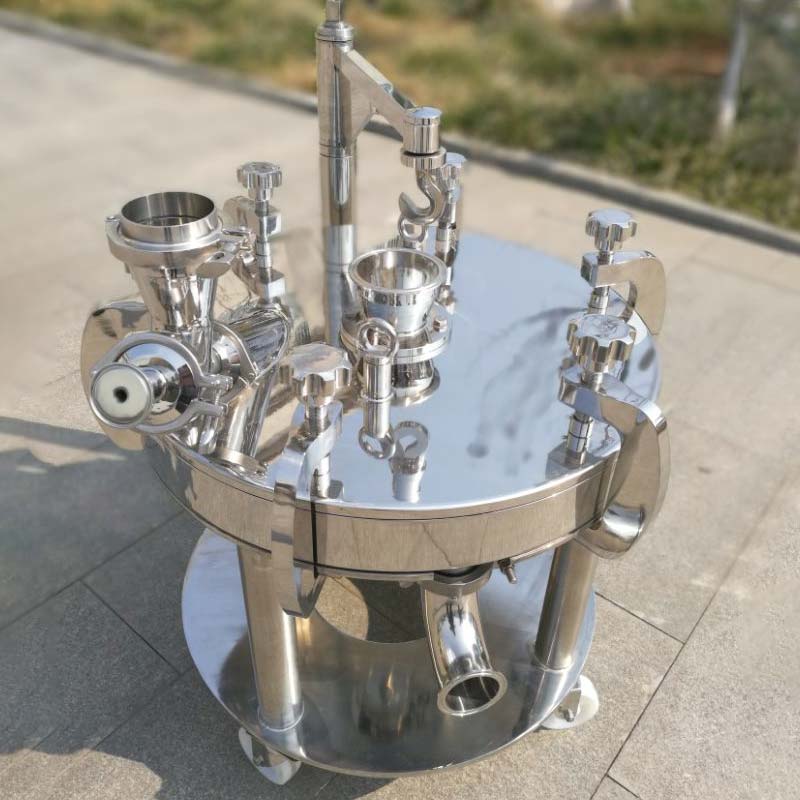
The jet mill is mainly a crushing equipment that relies on particle collision for crushing operations. Its basic working principle is to accelerate the compressed air into a subsonic or supersonic airflow through the Laval nozzle, and the ejected jet drives the material to move at a high speed, so that the material collides, frictions and shears and crushes. These pulverized materials will be transferred to the classification area with the airflow for classification. The materials that meet the particle size requirements are collected by the collector, and the materials that do not meet the particle size requirements are returned to the crushing chamber to continue crushing until they reach the required particle size and are captured.
With the continuous advancement of technology. New jet mills are constantly being developed, making them easier to clean, simpler in structure and easier to install. At present, jet mills are widely used in many industries. It even plays an irreplaceable role in some production lines.
1. Pharmaceutical raw materials
It is indispensable to take medicine when you are sick. In order to allow the medicine to be fully absorbed by the human body system to exert its efficacy, the pharmaceutical industry generally has certain particle size requirements for most raw materials. Medical-related research shows that in solid pharmaceutical preparations, the particle size of the drug affects the rate of dissolution and release of the drug from the machine, which in turn affects the efficacy, bioavailability and availability of the drug. Especially for poorly soluble solid drugs, the smaller the particle size, the faster the dissolution rate and the more drug absorption.
2. Chinese medicine powder
There is no accompanying heat in the pulverization process of the jet mill, and the pulverization temperature is low, because it is also suitable for the pulverization of traditional Chinese medicine, especially heat-sensitive medicinal materials. The traditional pulverizer has certain limitations in the preservation of the active ingredients of traditional Chinese medicine, but the use of jet pulverizers can micronize Chinese medicinal materials, speed up the dissolution of active ingredients of traditional Chinese medicine, increase the dissolution rate, and increase the speed and degree of absorption.
3. Pesticide powder
Pesticide raw materials must go through a certain process to form a certain form of preparation before they can be used. If it is to be made into powder and granular form, then the indispensable step is the crushing of pesticide raw materials. If a jet mill is used, the powder particle size of the pesticide raw material can be crushed to 5-10 μm after ultra-fine crushing, and its uniformity, dispersibility, and drug contact area are significantly improved. Not only the bactericidal, insecticidal, and herbicidal effects are significantly enhanced, but also the amount of pesticides used can be greatly reduced.
4. Chemicals, oxides, non-metallic minerals and other new materials
Finally, there are countless chemicals, oxides, and non-metallic mineral products. The essence of the jet mill is a kind of equipment that crushes large particles into small particles, so as long as there is such a demand, the jet mill can be selected for production.
The configuration of the jet mill can be customized according to the needs of customers. Some parts can be made of ceramics (silicon oxide, zirconia, silicon carbide, etc.), high-hardness alloys, etc., to deal with various problems in the crushing process. For example, the airflow crushing equipment system dedicated to battery materials will be protected with ceramic patches, ceramic coatings, ceramic linings, etc. to avoid iron pollution during the crushing process and ensure the purity of the crushed materials. At present, in actual production, good results have been achieved in crushing silicon oxide, lithium iron phosphate, lithium carbonate and other materials.
The materials pulverized by air flow have the characteristics of ultrafine ultrapure, smooth particle surface, regular particle size, high activity, etc. Industries are pretty good choices.
What are the powder spheroidization technologies?
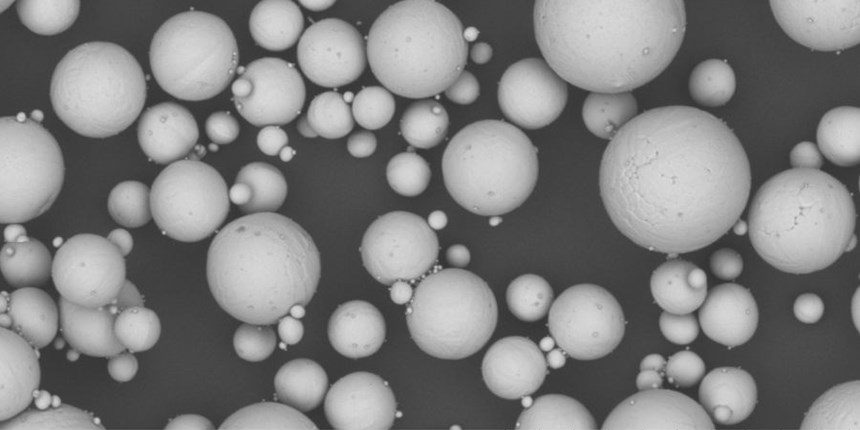
With the development of industry, powder technology, especially particle spheroidization technology and equipment, has attracted more and more attention from the industry. Spherical powder has advantages that ordinary powders do not have, such as high specific surface area, high tap density, and good fluidity. It is widely used in lithium-ion batteries, food, medicine, chemical industry, building materials, mining, microelectronics, 3D printing and other industries, and has gradually become an irreplaceable new material. The preparation of high-quality spherical particles has always been the focus and difficulty of the industry.
High-speed airflow impact spheroidization method
At present, the high-speed airflow impact spheroidization method has the advantages of high classification accuracy, adjustable classification accuracy, and large production capacity, so it is widely used in the field of natural graphite, artificial graphite and cement particle spheroidization treatment.
The principle of this method is as follows: the high-speed airflow impact mill uses a rotator that rotates at high speed around a horizontal or vertical axis to subject the material to a series of actions from high-speed airflow, hammer collision, friction, and shearing to obtain ultra-fine powder. Qualified materials are obtained through classification collection. The key is to improve product indicators such as particle sphericity, tap density, spheroidization yield, particle size distribution, etc. .
Taking the spheroidization process of natural flake graphite as an example, it can be roughly divided into four steps, namely, bending—balling—adsorption—compacting.
Common spheroidizing powder applications
1. Lithium-ion battery anode material powder
Natural graphite has the characteristics of easy acquisition and excellent electrochemical performance, and is widely used in lithium-ion battery anode materials. Artificial graphite has the advantages of good cycle performance, low cost and stable structure, so it has gradually become the focus of research. Spherical graphite has the advantages of high rate capacity, high Coulombic efficiency, low irreversible capacity, concentrated particle size distribution, small specific surface area and high tap density. At present, natural flake graphite and artificial graphite mainly obtain spherical graphite through high-speed airflow impact. Improve electrochemical performance.
2. Spherical silica powder
Spherical microsilica powder has good shape, high chemical purity, and low content of radioactive elements. Its application can greatly reduce the thermal expansion coefficient of plastic packaging compounds and improve the thermal stability of plastic packaging compounds. Therefore, it is widely used in the production of integrated circuits. The most important package filling material in integrated circuits.
3. Spherical cement powder
Ordinary cement has porous characteristics and complex pore structure, which will reduce fluidity and gradually harden during hydration reaction. Spheroidizing ordinary cement to obtain spherical cement can improve the physical properties of the material in the following aspects: reducing water demand, reducing porosity, improving fluidity, and increasing cement strength.

